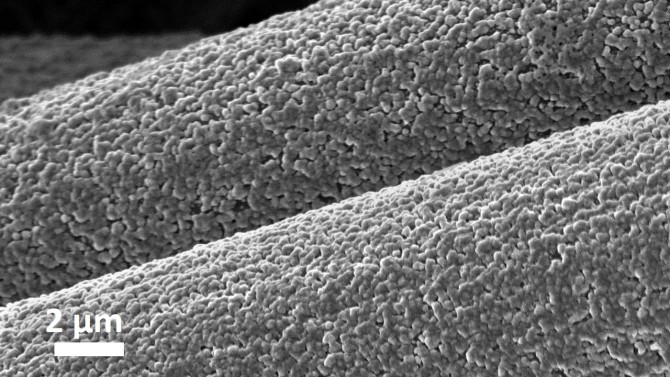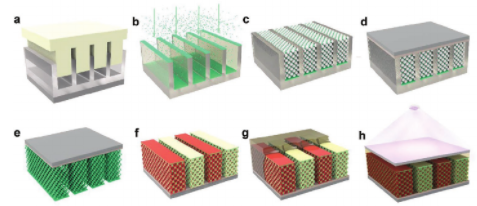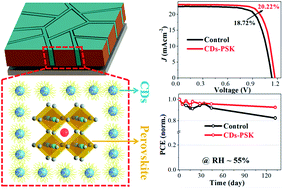2021/4/5 アメリカ合衆国・コーネル大学

・ コーネル大学が、アルミニウム(Al)を使用した金属アノードの蓄電池を開発。
・ 同大学では、より安価なエネルギー貯蔵を実現する蓄電池開発に向けた低コスト材料の研究を進めている。リチウムイオン電池は現在市場を席巻しているが、充電が遅く発火の危険性が懸念されるため、より安全で環境に優しい代替を探求する。
・ 新蓄電池では、地球の表層部に豊富に存在し、3 価・軽量のため他の材料に比べてエネルギーをより多く貯蔵する高容量の Al をアノードに、カーボンをカソードにそれぞれ使用。ただし、アノードとカソードを隔てるガラス繊維製のセパレータと Al の化学反応で電池の短絡や故障が起こるため、電極としての Al の使用は難しい。
・ 本研究では、Al とより強力に化学結合するカーボンファイバーの電極基板の設計によりこの課題に対処。従来の平坦な 2D 構造電極に代わり、新蓄電池では、充電時に Al がより強力な共有結合を介して炭素構造体に均一に積層し、厚みのあるより精細な調整が可能な Al 層を作る 3D 構造電極を採用。最高 1 万サイクル(エラーフリー)の長寿命を実証した。
・ 同大学では、核生成を促進する多大な熱力学的推進力を提供する基板の設計と、微細スケールにて大きくなる表面張力等の力による金属電極の析出や熱暴走の回避の今回と同様の原理に基づき、過去の研究において亜鉛アノードの可能性を実証している。
・ 本研究は、米国エネルギー省(DOE)のエネルギーフロンティア研究センター(@ストーニーブルック大学)である Center for Mesoscale Transport Properties を通じた Basic Energy Science Program が支援した。
URL: https://news.cornell.edu/stories/2021/04/aluminum-anode-batteries-offer-sustainable-alternative
<NEDO海外技術情報より>
(関連情報)
Nature Energy 掲載論文(アブストラクトのみ:全文は有料)
Regulating electrodeposition morphology in high-capacity aluminium and zinc battery anodes using
interfacial metal-substrate bonding
URL: https://www.nature.com/articles/s41560-021-00797-7
Abstract
Although Li-based batteries have established a dominant role in the current energy-storage landscape, post-Li chemistries (for example, Al or Zn) are emerging as promising candidates for next-generation rechargeable batteries. Electrochemical cells using Al or Zn metal as the negative electrode are of interest for their potential low cost, intrinsic safety and sustainability. Presently, such cells are considered impractical because the reversibility of the metal anode is poor and the amount of charge stored is miniscule. Here we report that electrodes designed to promote strong oxygen-mediated chemical bonding between Al deposits and the substrate enable a fine control of deposition morphology and provide exceptional reversibility (99.6–99.8%). The reversibility is sustained over unusually long cycling times (>3,600 hours) and at areal capacities up to two orders of magnitude higher than previously reported values. We show that these traits result from the elimination of fragile electron transport pathways, and the non-planar deposition of Al via specific metal–substrate chemical bonding.



